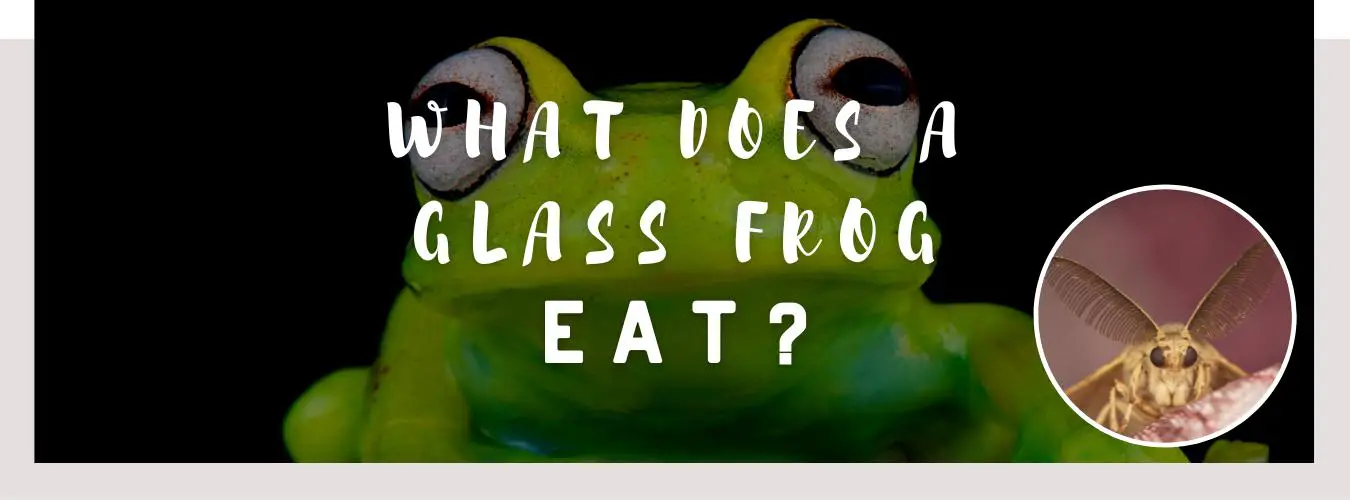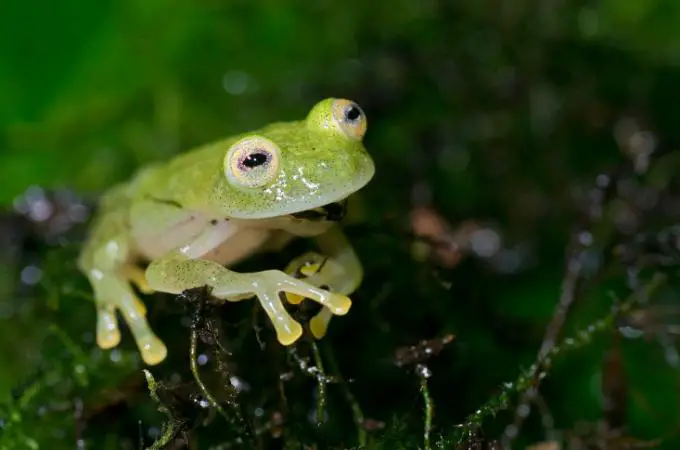
Have you ever heard of a glass frog? This unique species is found in the tropical rainforests of Central and South America, living near streams or rivers. With its bright green color and translucent skin, it’s hard to miss! But what does a glass frog eat? In this article, we’ll break down everything you need to know about this fascinating creature – from their diet to their habits – so that you can get a better understanding of how they live safely in the wild.
Glass Frog Anatomy
Glass frogs are truly unique amphibians, with their transparent skin allowing us to see their internal anatomy. Their most distinctive feature is their translucent ventral side which allows one to observe the organs and bones of the ribcage in detail. This includes a “see through” heart, liver, intestines and kidneys. There are also two small glands located underneath the skin on either side of its head – these are called parotoid glands and they produce a toxin that deters predators from attacking them.
Habitat and Distribution
Glass frogs are a unique group of frogs belonging to the family Centrolenidae. These frogs are known for their translucent skin, which allows their internal organs to be visible through their abdomen. Glass frogs are primarily found in Central and South America, from Mexico to Ecuador. They are mostly arboreal and are commonly found in humid tropical forests, especially near streams and rivers. Glass frogs lay their eggs on leaves overhanging the water, and once the eggs hatch, the tadpoles drop into the water below where they continue to develop. While glass frogs are not considered endangered, some species are threatened due to habitat loss and degradation caused by deforestation and agriculture.
Reproduction of Glass Frogs
Reproduction of glass frogs is an interesting process. The male frog will start by calling out to attract a female and then, if successful, they will begin mating. After mating the female will lay her eggs on leaves or other vegetation close to bodies of water such as streams or ponds. These eggs are transparent so potential predators can easily spot them but this also helps with thermoregulation which increases their chances of survival. Once hatched the tadpoles develop into full-grown frogs in about 2 months time!

Diet of the Glass Frog
The diet of a glass frog consists mainly of small insects and other invertebrates. Generally, they feed on gnats, moths, spiders, ants and flies that inhabit the trees surrounding them. They usually stay close to their home range in order to find food. Interestingly enough, due to their clear skin, you can actually see what they’re eating inside their stomachs as it moves around!
Predators and Protection Strategies
Glass frogs have a few natural predators in their environment, including birds, snakes, and small mammals such as rodents and bats. Because of their transparent skin, these frogs have developed several protection strategies to avoid being eaten. Glass frogs have evolved to blend in with their surroundings by having green or brown coloration, allowing them to become almost invisible in the foliage. They are also known to be very agile and fast, able to jump quickly from one branch to another to evade predators. Additionally, some species have developed toxic skin secretions, which can be harmful or even deadly to potential predators. Unfortunately, despite these protection strategies, glass frogs are still at risk due to habitat loss and fragmentation caused by human activities.

Conservation Status of the Species
The conservation status of glass frogs varies depending on the species and their geographic range. While some species are considered to be of “Least Concern” according to the International Union for Conservation of Nature (IUCN) Red List, others are considered to be “Endangered” or “Vulnerable.” Habitat loss and degradation caused by deforestation, agricultural expansion, and urbanization are the primary threats facing glass frogs. The increasing demand for natural resources, such as timber and minerals, has led to the destruction of glass frog habitat. Additionally, climate change may be affecting the distribution and abundance of these frogs by altering their environment. Conservation efforts aimed at preserving and restoring the habitat of glass frogs are essential for their long-term survival. The establishment of protected areas, the implementation of sustainable land-use practices, and the reduction of carbon emissions are some of the ways that can help in the conservation of glass frog species.
Interesting Facts About the Glass Frog
The glass frog is an incredible species that can be found in Central and South America. This frog is known for its nearly transparent skin, which allows you to see the organs beneath it! Amazingly, the color of their bodies can range from bright green to dull brown depending on their environment. What’s even more incredible about these frogs is that they lay their eggs on leaves above streams or pools of water so predators cannot get them. Another unique feature about this species is that males will guard the nests until they hatch!
You might also like: https://whatanimalseat.com/do-frogs-eat-mosquitoes
